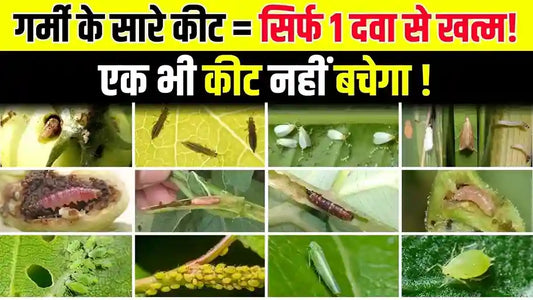Jassids, also known as leafhoppers, are small, sap-sucking insects that belong to the family Cicadellidae. They are found all over the world and are considered to be major pests of a wide range of crops. Jassids are small, sap-sucking insects that can be a serious pest for okra plants. They are wedge-shaped, greenish-yellow in color, and have a pair of black spots on their head. Jassid nymphs are green and translucent. Both adults and nymphs walk diagonally.

- Type of Infestation: Pest
- Common Name: Jassids
- Causal Organism: Amrasca devastans
- Affected Parts Of the plant: Leaves, fruit, Stem
Identification:
- Size: Typically around 2-3 mm long, but can vary depending on the species.
- Shape: Slender, wedge-shaped body with prominent eyes.
- Color: Usually green or yellow, but some species can be brown, black, or even brightly colored.
- Wings: Transparent wings that fold flat over their back when resting.
Environmental favorable factors for pests/Diseases:
- Temperature: Jassids are warm-blooded insects and prefer temperatures between 20-30°C (68-86°F) for optimal development and activity.
- Humidity: Dry conditions reduce the chance of fungal diseases that can harm jassids and allow them to move more freely on the plant.
Symptoms of Pest/Disease:
- Yellowish stippling: Tiny yellow dots appear on the upper surface of leaves, marking the feeding sites of jassids.
- Stunted growth: Less common, but jassid feeding on tender stems can hinder the overall growth of the plant.
- Dieback: In severe cases, stem feeding can lead to dieback of branches or even the entire plant.
Measures to control Pests/Diseases:
| Products | Technical Names | Dosages |
| Chakrawarti | Thiamethoxam 12.6 % lambda cyhalothrin 9.5 % zc | 80 ml per acre |
| Thioxam | Thiamethoxam 25 % wg | 200 g/ha |
| Imd-178 | Imidacloprid 17.8 % SL | 100 -150 ml per acre |
| K - Acepro | Acetamiprid 20 % SP | 60 to 80 grams per acre |
| IMD-70 | Imidacloprid 70 % WG | 2-3gms per 15 ltr water |










